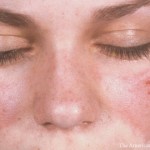The committee agreed not to count a feature when it is more likely due to another condition and to create weighted criteria. Example: Such manifesttations as lupus nephritis carry a higher score than less common skin features. If the score is 10 or higher, the patient is classified as having SLE.
The committee wanted to reduce bias and circular reasoning, which could affect the criteria’s validity and viability, said co-chair Sindhu Johnson, MD, PhD, director of the scleroderma program at the University of Toronto.3 In the past, the same experts derived the criteria and then submitted cases to test them, she said. Separate panels, including rheumatologists, dermatologists, nephrologists and pediatricians, were recruited for each phase. SLE patients were surveyed to find out what symptoms they experienced early in their disease.
The experts nominated criteria that distinguish early from established disease. “We also asked them to think more broadly: Could these criteria also be used for juvenile-onset SLE? Or to identify established disease, and also early disease?” said Dr. Johnson. They found that manifestations of both early and established SLE, such as autoantibodies, specific renal features and skin manifestations, are also seen in mimickers. In addition, 85% said they would positively classify a patient if renal pathology alone showed lupus nephritis.
Looking at data from early SLE cohorts, “it appears that a number of classical lupus manifestations do distinguish SLE from mimickers, notably kidney disease, oral ulcers, pleuritis and alopecia,” she said.4 An interesting new finding was that non-classical, less specific manifestations, such as arthralgia, fever and fatigue, also distinguish early SLE from mimickers. “Finally, we looked to the patients. They also reported arthralgia, fever and fatigue as manifestations they experienced early in their disease.”5
A panel of SLE experts reviewed the criteria in development. Their recommendations included developing precise definitions for each criterion and clustering criteria related to the same organ systems into domains or buckets. Both recommendations were validated by the committee and applied.
“Because they are interrelated, it would be inappropriate to doubly count criteria within a domain,” she added. After ranking and scoring by a different expert panel, the criteria were tested in a derivation cohort and found to have a sensitivity of 98% and a specificity of 97%—higher than both the 1997 ACR and 2012 SLICC criteria, she said. The criteria will now be validated against a large cohort.
The development team’s goal is for the criteria to include a mobile app and online tool that define each criterion and add up the patient’s score, said Karen Costenbader, MD, director of the lupus program at Brigham and Women’s Hospital in Boston. She showed the audience how to score several patient cases. Despite their many strengths, these criteria have some limitations, so discussion is welcome, she said.


